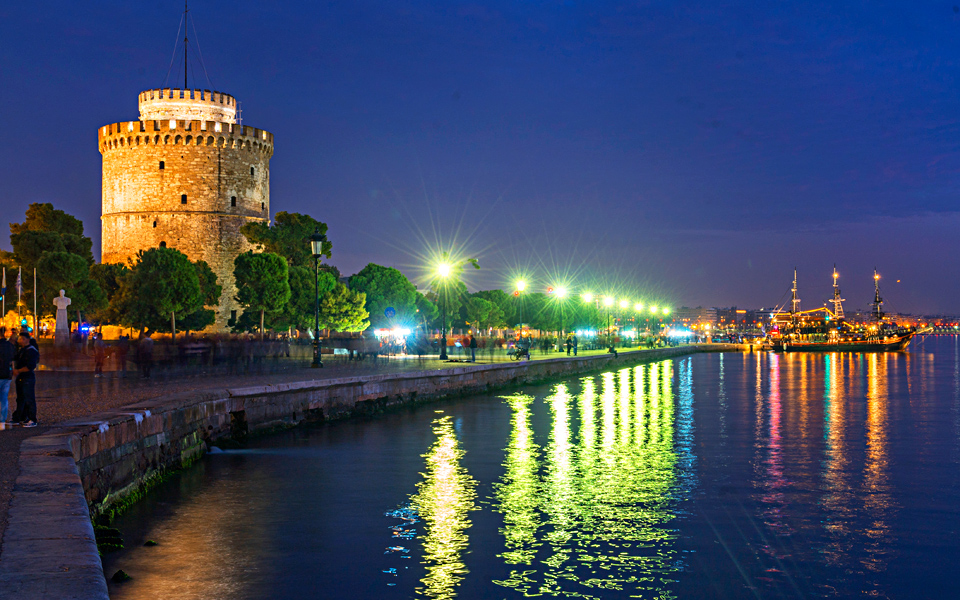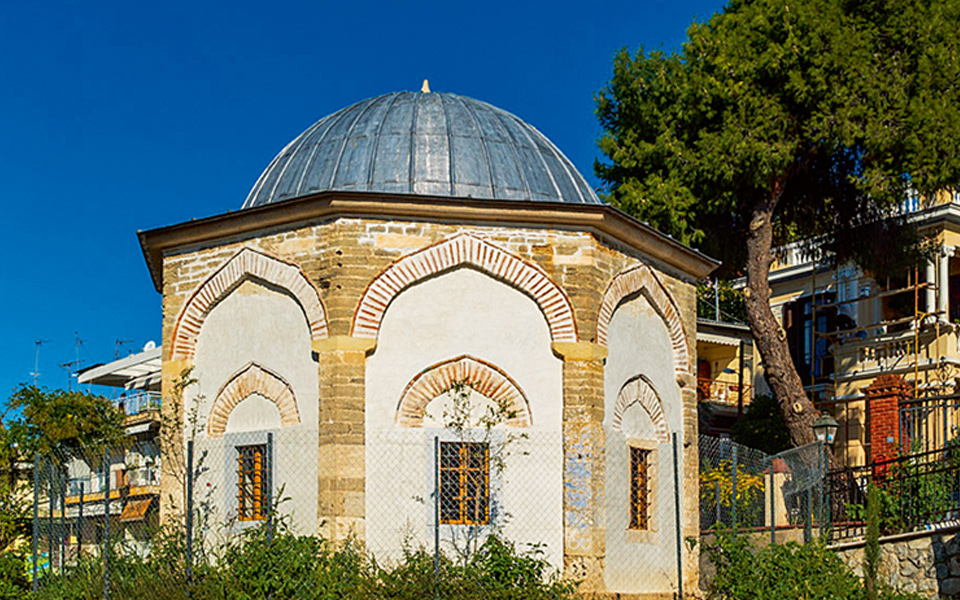Evangelos Gerovassiliou: In Love with the Vineyard
The Thessaloniki-born winemaker welcomes us to...

The White Tower's walls were once soaked with the blood of prisoners.
A modern, vibrant cosmopolitan city, with a complex and fascinating history, Thessaloniki offers a charming set of solemn religious traditions, urban myths and legends of the paranormal. Most of them are inextricably tied to specific buildings, sites and landmarks, easily located and freely accessed.
Here are some of the places you can visit to ponder the more mysterious aspects of the city:
1. The Red Tower: The White Tower by the sea front is the emblem of the City. Search no further for the Red Tower – you’re looking at it. According to the legend, during the age when the building was used as a prison, the Tower’s walls were soaked with the blood of tortured prisoners. After being decommissioned as a jail, the whole building had to be whitewashed with asbestos paint in order to erase the marks of its gruesome past. Hence, the “White Tower” of today.
2. The Utilities’ iron Caps: The look like regular utility steel caps, covering water pipes or electrical circuits, but the iron caps are carved with enigmatic symbols and quite often they are not connected to any known public grid. You can walk the historical center, eyes glued on the pavement, looking for these special iron caps and trying to decipher the meaning of their mysterious carvings. A good place to start is the so-called “All-Seeing Eye” symbol in front of the Municipal Library (Ethnikis Aminis Street). The metal caps are often stolen or vandalized, so unfortunately, there are no guarantees of a sighting. Still, the story offers the opportunity for a good walk. If you feel like unlocking the gates to a fourth dimension in Thessaloniki, skip to number four on this list.
3. The Bleeding Stone: The site of the ancient Roman Hippodrome, where at least 7,000 (some sources claim 18,000) spectators were brutally slaughtered under the order of the Byzantine Emperor Theodosius. The city’s surviving inhabitants erected a memorial stone with all the names of the victims. The stone was believed to miraculously bleed once a year, on the day of the massacre. It was not long before the Emperor ordered the memorial to be destroyed, to erase any memory of the massacre.
Since then a curse is said to haunt the Hippodrome Square. Almost every building that was erected in the area – specifically, any building whose tenants failed to acknowledge the sacred history of the site – was, according to local legend, violently destroyed. The curse was considered active until 1978, when a residential building collapsed during a particularly bad earthquake and claimed the lives of 29 people. The new building erected on the site (Billi Building) is now home to the Archives the History of Thessaloniki, which also contains extensive historical references to the Roman Hippodrome massacre. Having been suitably acknowledged, the victims of the massacre seem to have lifted the curse for the time being.
4. “Black Rock” Street: Thousands of cities around the world boast mysterious passages to other dimensions, but only in Thessaloniki do the Gates to the Unknown have an exact address. Look for Mavris Petras Street (Black Rock Street) in the area of Ano Poli. Don’t bother looking for numbers; this is a very narrow, short alley. Find it and you have arrived at the entrance to the Twilight Zone. Getting there is simple; knowing when the portal opens is a bit more complicated. The “Black Rock Street” urban legend is a relatively new one and still a work in progress. Even if you are unsuccessful in your quest for a shortcut to a parallel universe, you can admire the majestic, amphitheaterical view of the city, which is unexpectedly revealed to you from this narrow unassuming part of town.
5. Vasilissis Olgas 263: Everybody knows that the abandoned house at 263 Vasilissis Olgas street is haunted, plain and simple. Don’t lose sleep over it. No one else does, except, of course those who have heard the shrieks and ghoulish chants of the lost souls who… well, you know the rest. There are hundreds of variations of the story. Drop by for a visit and let your imagination do the rest.

This medieval, octagon-shaped building in the Ano Poli Area is a mausoleum, dedicated to the holy man Musha Baba of the Sufi mystical order.
6. The Dervish Guard: Speaking of ghosts, the medieval, octagon-shaped building in Terpsitheas Square (Ano Poli Area) is neither a church nor a mosque; it is a mausoleum, dedicated to the holy man Musha Baba of the Sufi mystical order. Revered by both Muslims and Christians of his time, Musha Baba still dominates the square. His remains were ceremoniously relocated to Turkey, but the guard of the tomb, an old dervish warrior (some say the Saint himself) is still making the rounds of the sacred burial site. He is a solemn, but otherwise benevolent ghost.
7. The Saint-General: A city swimming in myths, hauntings and legends could not possibly survive the severe blows of its troubled history without the protection of a very powerful benefactor. Enter Aghios Dimitrios (Saint Demetrius), the patron saint of Thessaloniki. He was martyred for Christ under the Emperor Galerius’ reign, during the early years of the fourth century BC.
Saint Demetrius, the military martyr, is the object of eternal gratitude for the countless miracles he is believed to have performed over the centuries. A holy champion of the city, an all-purpose saint, a protector through times of war and revolution, through sickness and health, through poverty and prosperity. His martyrdom site, an abandoned Roman sewer, around which the Aghios Dimitrios Byzantine Church is erected, is said to emit the aroma or myrrh. This is why Saint Demetrius’ complete Orthodox name is “Demetrius, the myrrh-streamer.” Even the staunchest of Thessalonians atheists take the Saint very seriously, and he can always be relied upon to lend a sympathetic ear to your woes when God might be otherwise engaged.
The Thessaloniki-born winemaker welcomes us to...
Aigai’s newly restored Macedonian palace represents...
The West Wall Collective revitalizes Thessaloniki’s...
Six creative Thessaloniki locals share their...